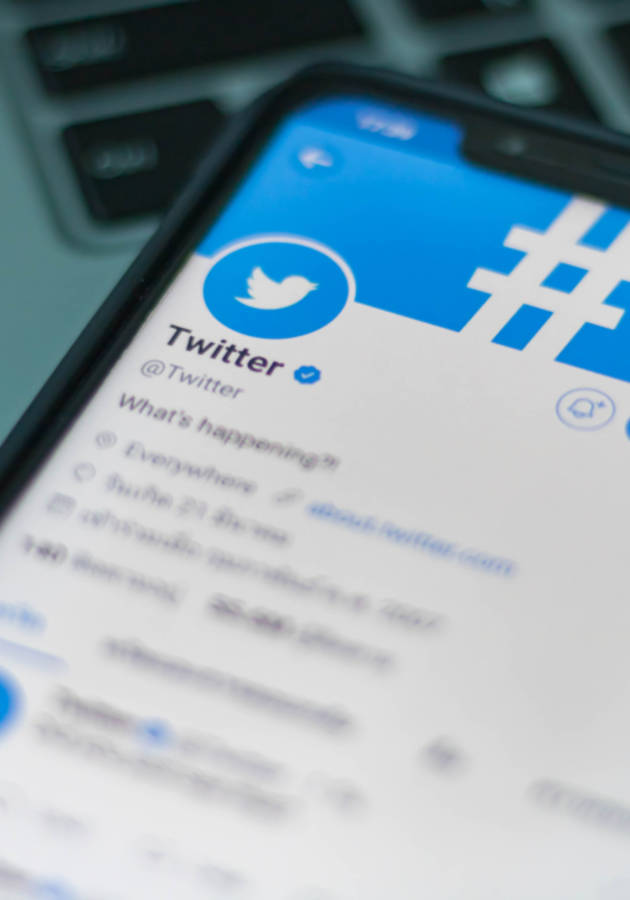“The near future,” thinks Alec Ross, one of America’s leading experts on innovation, “will see robot suits that allow paraplegics to walk, designer drugs that melt away certain forms of cancer, and computer code being used as both an international currency and a weapon to destroy physical infrastructure halfway around the world.”
“The Industries of the Future,” Ross’ eagerly awaited debut book, examines these breakthroughs and the effect they might have on your future. It is a book about “the next economy… written for everyone who wants to know how the next wave of innovation and globalization will affect our countries, our societies, and ourselves.”
So, get ready to learn all about the promise and peril of current innovation, and prepare to get a glimpse of what lies beyond the internet revolution.
Welcome your new job takers: the robots
The term “robot” was coined a century ago by the Czech science-fiction writer Karel Capek in the play “Rossum’s Universal Robots.” Its etymological roots point to two age-old Slavic words: “rabota” (obligatory work) and “robotnik” (serf). So, originally, in Čapek’s conception, robots were supposed to be “a new class of ‘artificial people’ that would be created to serve humans” by doing some of their work for them.
However, during the past several years, this idea has gotten a whole different meaning: according to a recent Oxford University study, “over half of U.S. jobs could be at risk of computerization in the next two decades.” More precisely, 47% of jobs are at high risk for robot takeover, and another 19% face a medium level of risk. Especially if your main job function is “to aggregate and apply information,” you better start adding bullet points to your resumé, because before too late, you will be rendered obsolete. The same holds true for waiters, caretakers, cab drivers, construction operatives, receptionists, deliverers and, even medical practitioners and beauticians.
Don’t believe the hype? Well, Foxconn – the Taiwanese company that manufactures the iPhone – recently ordered 1 million robots to supplement the approximately 1 million human workers the company employs. Uber has already set its sights on an autonomous taxi fleet, and Google, through its Waymo spinoff, launched a commercial self-driving car service in Phoenix at the end of 2018. Just in 2013, 1,300 surgical robots were bought by medical facilities for an average cost of $1.5 million each. That same year, the Japanese government granted $24.6 million to companies focusing on eldercare robotics.
To this day, Japan has remained the global leader in robotics, followed closely by Germany and three others: China, South Korea, and the United States. These countries are known as the Big Five in robotics and account for more than two-thirds of total robot sales worldwide. The gap between them and other countries will probably go bigger in the future since they are currently building the back-end support systems that will enable the robotics revolution.
In a way, they are doing what network equipment makers such as Cisco Systems and Juniper Networks did for the internet. The next Silicon Valley will probably emerge somewhere in East Asia, where we will probably get a first glimpse of the robot-filled world of tomorrow. Whether these countries will learn, in the meantime, how to deal with the obsolete human workforce and distribute the wealth properly – and whether this will lead to a global shift in power – remains to be seen. Either way, we won't have to wait for that long.
The future of the human machine
It’s easy to upgrade robots. To make matters even more interesting, it gets easier by the hour: thanks to cloud computing technology and supercomputers, robots are now able to connect and even learn from each other. Where does that leave humans?
Clearly, we can’t compete with cheap, immensely smart, and tireless workers who make no mistakes and take no vacations. So, maybe we shouldn’t: maybe we should start using them to upgrade ourselves a bit as well. After all, we’ve been doing it for quite some time: it is thanks to unparalleled advances in biotechnology – ranging from new wonder drugs to artificial hearts – that we’ve lengthened our lives and improved our health multiple times over the past half-century. Ross thinks this is only the beginning. “The last trillion-dollar industry was built on a code of 1s and 0s,” he writes. “The next will be built on our own genetic code.”
Even though genomic research has been around ever since a Czech monk named Gregor Mendel discovered the laws of heredity in the mid-19th century, the breakthrough that launched a thousand genomics startups around the world happened in 1995 when the genome of a free-living organism was sequenced for the first time in history – the infection-causing bacterium Haemophilus influenzae. A little less than a decade later, the publicly funded International Human Genome Sequencing Consortium announced that it had sequenced the human genome to near-completion.
Thanks to this, scientists are now able to detect diseases long before they become a severe threat. Cancers are, after all, nothing more than genetic mutations, and now that we know the complete structure of the human genome, we can hope to be able to detect them in the earliest stages. Even now, a procedure called “liquid biopsy” – developed by Bert Vogelstein, a Johns Hopkins oncology and pathology professor – can uncover the presence of even the tiniest amounts of tumor DNA in a blood sample.
A few innovative startups have already started providing highly personalized health recommendations based on patient’s DNA sequences: the original Human Genome Project costs the taxpayers over $3 billion, but nowadays, sequencing costs millions less! Finally, some companies work on smartphone apps that might save you a trip to the optometrist quite soon, and others who are currently modifying pigs genetically to grow inside them “human-compatible lungs, kidneys, and hearts.”
In case you wonder why you are not aware of any of this, it’s because most of these things are going on in China, whose Beijing Genomic Institute owns more sequencing machines than the entire United States. Their immediate plans: to sequence the genomes of almost every child in China!
The codification of money, markets, and trust
In 2009, American entrepreneur and glassmaker Jim McKelvey lost a $2,000 sale because his boutique glassblowing company didn’t have the technology to accept an American Express credit card. Soon after, he shared his experience with his good friend Jack Dorsey, just when he was looking for new opportunities after leaving Twitter.
Dorsey immediately realized that the problem wasn’t Jim’s but much more general: simply put, “the credit card technology lagged behind the mobile breakthroughs of recent years.” That same year, Dorsey and McKelvey founded Square, a mobile payment company that is now worth over $3 billion. And yet, it is only one of the numerous similarly valued companies that are on a route to make not only physical money but also credit cards obsolete in the not-so-distant future.
You probably know Google Wallet, Apple Pay, Stripe, Amazon Pay, PayPal. However, there’s a big chance that you’ve never heard about one of the most interesting companies of this kind in the world: Kenya’s M-Pesa. Described by Ross as a prime example of these new technologies that show the growing power of coded money and markets, M-Pesa allows customers to send and receive payments through their cell phones. Because it’s much safer than other alternatives in Kenya, it is wildly successful: practically half of the country’s population has M-Pesa accounts, and about a fourth of Kenya’s gross domestic product flows through the network. More importantly, the adoption of M-Pesa has contributed to the rise of rural households’ incomes by as much as 30%!
Even so, M-Pesa and Square are merely the beginning. Technologies such as blockchain – which are resistant to modification by design and, thus, basically unhackable – promise to redefine the very nature of money, trading, and trust. Even if the blockchain-based Bitcoin fails, some other cryptocurrency might eventually succeed. If that happens, banks and governments will stop being “arbiters of trust,” and we will have to create “a new protocol for doing business around the world.” It may sound scary – but it is also exciting as well.
Cybersecurity: the weaponization of code
The reason why people believe that Bitcoin or blockchain-based innovations might revolutionize our world is simple: they are designed in such a way that they don’t need any kind of regulations to work. The downside is that the more we translate our institutions, our personal belongings and even physical existence into ones and zeros, the more chance there is for someone to find a way to do serious damage before anyone can intervene. That’s already happening. The Cold War may have ended about three decades ago, but, to paraphrase Ross, soon after, we entered into a Code War.
It is frightening to think how much real damage on a personal or systemic level can be done with a few clicks in the 21st century. It is even more frightening when one hears the numbers: cyberattacks cost governments and individuals well above $400 billion a year – “a number that is larger than the gross domestic product of about 160 of the 196 countries in the world.”
Unsurprisingly, this has led to the covert sanctioning of cybercrime by several countries: it is difficult to believe that China doesn’t finance all kinds of intellectual property theft, just as it is difficult to say that the Russian political groups cyber attacking former Soviet countries aren’t government-funded.
With the rise of cybercrime costs, an industry devoted to countering the threat has risen meteorically as well. Nowadays, cybersecurity is not only one of the fastest-growing sectors of the economy, but it is also one of the most lucrative: estimates show that the current value of $175 billion a year will double by 2021.
Consequently, just as it was practically mandatory for a board of directors to include an expert in auditing a decade ago, in five years, no board of directors will be deemed complete or serious if it doesn’t have at least one member with expertise in cybersecurity. Even today, this is the case with most of the Fortune 500 companies.
Data: the raw material of the Information Age
Just like land and iron were the raw materials of the Agricultural and the Industrial ages, respectively, data is the raw material of the Information Age. And it is just as worthy – if not more – like any other valuable resource: in fact, several studies done during the last few years have uncovered that data may be more valuable than oil and gold combined.
And yet, most of us give it for free in exchange for convenience, pleasure, and vaguely promised security. Yet, as it has become painfully obvious during the last few years, once we hand over our data, private companies often tend to use it in “secretive or questionable ways.” This is alarming because some of them own as many as 75,000 individual data points about the average American consumer.
Consider the case of Medbase200, an Illinois-based company that sells marketing information to pharmaceutical companies. A few years ago, the company went as far as to provide lists of rape and domestic violence victims, HIV patients, and “peer pressure sufferers” for as little as $79 per 1,000 names. Other companies such as Facebook have been blamed and tried for selling similar lists to companies that might have used this data to affect the outcomes of ostensibly free elections around the world. And this is just a glimpse of what is to follow: nearly everything will be digitized soon, and nearly everyone might be able to have some access to your personal data.
The former can’t be stopped; the latter must. So, next time – before installing an app – please at least skim the terms and conditions and don’t accept anything you don’t want. A few newly introduced internet laws are on your side.
Final Notes
Things are changing and they are changing pretty fast. Just two or three decades from today, the world may be unrecognizable to current generations. Robotics, genomics, codification, and Big Data are revolutionizing almost every sphere of human knowledge. And even though we can’t predict how successful they are going to be across disciplines, you better start preparing as soon as possible.
If you need a handbook, “The Industries of the Future” is one of the best you can find on the market. “In a world growing more chaotic,” says former Google CEO Eric Schmidt, “Alec Ross is one of those very rare people who can see patterns in the chaos and guidance for the road forward.” Follow him. Or risk being left behind.
12min Tip
To quote William Gibson, the guru of the cyberpunk literary movement, “the future is already here – it's just not very evenly distributed.” So, be curious, read science news, and keep pace with innovations. And don’t allow yourself to be one of the people who’ll be left behind by the future.





























